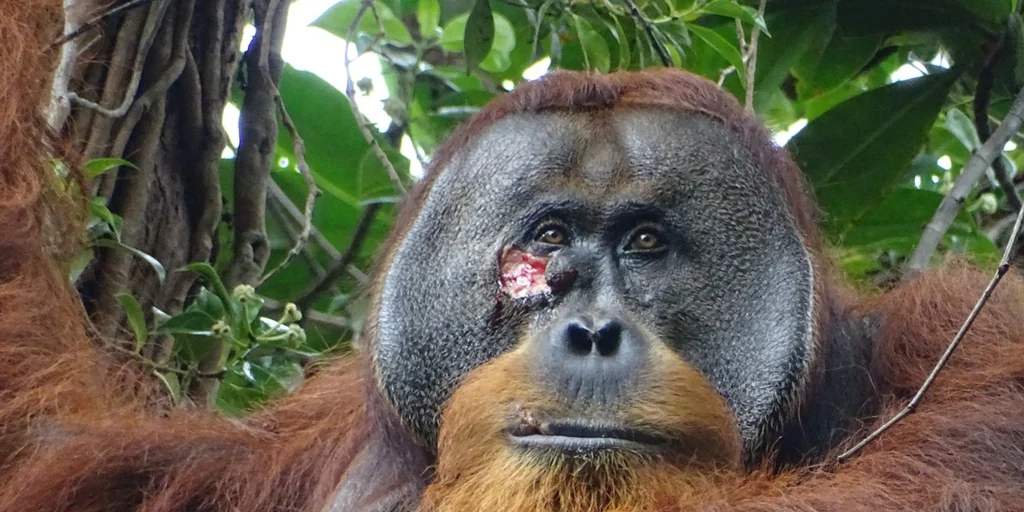He first observed an orangutan healing its wounds with medicinal plants

This is the first time that scientists have had the opportunity to see something like this. An animal applies medicinal plants to its wounds with the express intention of healing them. Previously, it was observed that many species of primates swallowed, they chewed or rubbed their bodies With plants that had medicinal properties, but no one had yet seen any of them applied to a recent wound.
The extraordinary behavior was observed in a male Sumatran orangutan (Pongo abelii), which ingested pre-chewed leaves of one type. allamanda (Fibrouria tinctoria), is a climbing plant used in traditional medicine to treat wounds and conditions such as dysentery, diabetes and malaria.
The findings, published in ‘Scientific Reports’, represent the first report on the healing of open wounds by a wild animal using a plant with known medicinal properties.
Under the direction of Isabelle Laumer of the Max Planck Institute for Animal Behavior in Konstanz, Germany, researchers observed the orangutan, named Rakus, at the Suak Baliming research area in Gunung Leuser National Park, Indonesia, during June 2022.
Thus Rakas was cured
Rakas chewed the stem and leaves of the plant for seven minutes, then repeatedly applied the resulting fluid to a wound on his right cheek three days earlier. Rakas then applied the chewed leaves to the wound until it was completely covered and continued to eat the plant for the next half hour.
In the days that followed, researchers saw no signs of infection in the wound, which closed within five days and completely healed within a month.
Because orangutans for more than 30 minutes repeated application of chewed plant On her injured cheek, but not on other parts of her body, Laumer and his team have no doubt that Rakas deliberately tried to heal her wound.
Five days after applying the chewed plant, the wound closed without any signs of infection. Within a month the cheek was completely healed.
safaruddin
Previous research had already identified antibacterial, anti-inflammatory, antifungal and antioxidant properties in Fibrorrhea tinctoria and there is no doubt that chewing the leaves helped Rakus. reduce pain and swelling To cause wounds and promote their healing. The authors do not know whether this was the first time Rakas had treated a wound of his own or whether this behavior was learned from other orangutans.
According to researchers, the fact that Rakus will deliberately treat his wound Suggests that such behavior may have originated in a common ancestor shared by humans and great apes.
(tagstotranslate)they observe